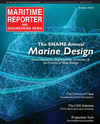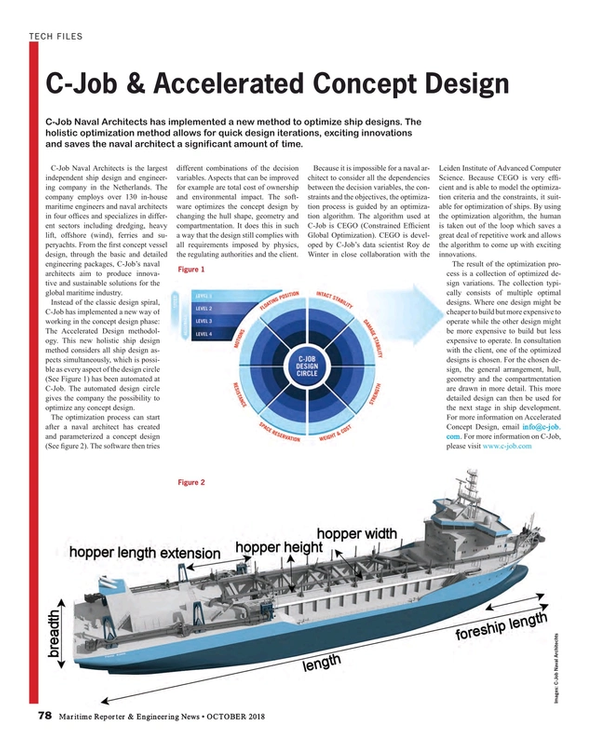
Case Study: C-Job & Accelerated Concept Design
C-Job Naval Architects has implemented a new method to optimize ship designs. The holistic optimization method allows for quick design iterations, exciting innovations and saves the naval architect a significant amount of time.
C-Job Naval Architects is the largest independent ship design and engineering company in the Netherlands. The company employs over 130 in-house maritime engineers and naval architects in four offices and specializes in different sectors including dredging, heavy lift, offshore (wind), ferries and superyachts. From the first concept vessel design, through the basic and detailed engineering packages, C-Job’s naval architects aim to produce innovative and sustainable solutions for the global maritime industry.
Instead of the classic design spiral, C-Job has implemented a new way of working in the concept design phase: The Accelerated Design methodology. This new holistic ship design method considers all ship design aspects simultaneously, which is possible as every aspect of the design circle (See Figure 1) has been automated at C-Job. The automated design circle gives the company the possibility to optimize any concept design.
The optimization process can start after a naval architect has created and parameterized a concept design (See figure 2). The software then tries different combinations of the decision variables. Aspects that can be improved for example are total cost of ownership and environmental impact. The software optimizes the concept design by changing the hull shape, geometry and compartmentation. It does this in such a way that the design still complies with all requirements imposed by physics, the regulating authorities and the client.
Because it is impossible for a naval architect to consider all the dependencies between the decision variables, the constraints and the objectives, the optimization process is guided by an optimization algorithm. The algorithm used at C-Job is CEGO (Constrained Efficient Global Optimization). CEGO is developed by C-Job’s data scientist Roy de Winter in close collaboration with the Leiden Institute of Advanced Computer Science. Because CEGO is very efficient and is able to model the optimization criteria and the constraints, it suitable for optimization of ships. By using the optimization algorithm, the human is taken out of the loop which saves a great deal of repetitive work and allows the algorithm to come up with exciting innovations.
The result of the optimization process is a collection of optimized design variations. The collection typically consists of multiple optimal designs. Where one design might be cheaper to build but more expensive to operate while the other design might be more expensive to build but less expensive to operate. In consultation with the client, one of the optimized designs is chosen. For the chosen design, the general arrangement, hull, geometry and the compartmentation are drawn in more detail. This more detailed design can then be used for the next stage in ship development.
Read Case Study: C-Job & Accelerated Concept Design in Pdf, Flash or Html5 edition of October 2018 Maritime Reporter
Other stories from October 2018 issue
Content
- Marco Ryan Plots a Digital, Connected Course for Wärtsilä page: 7
- The USCG RDC & Electronic Aids To Navigation page: 14
- Interview: Jeong-kie Lee, Chairman, Korean Register & IACS page: 16
- Liquefaction and Lost Bulk Carriers: Is a Design Change Warranted? page: 22
- Making the Case for LPG as a Marine Fuel page: 26
- TOTE Touts 'LNG-as-Fuel' Experience page: 30
- One-on-One with Suzanne Beckstoffer page: 38
- SNAME: Plotting the Path Ahead page: 48
- Case Study: C-Job & Accelerated Concept Design page: 78
- UV-C Keeping Ship Hulls Free from Biofouling page: 79


